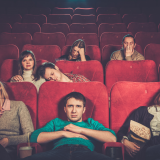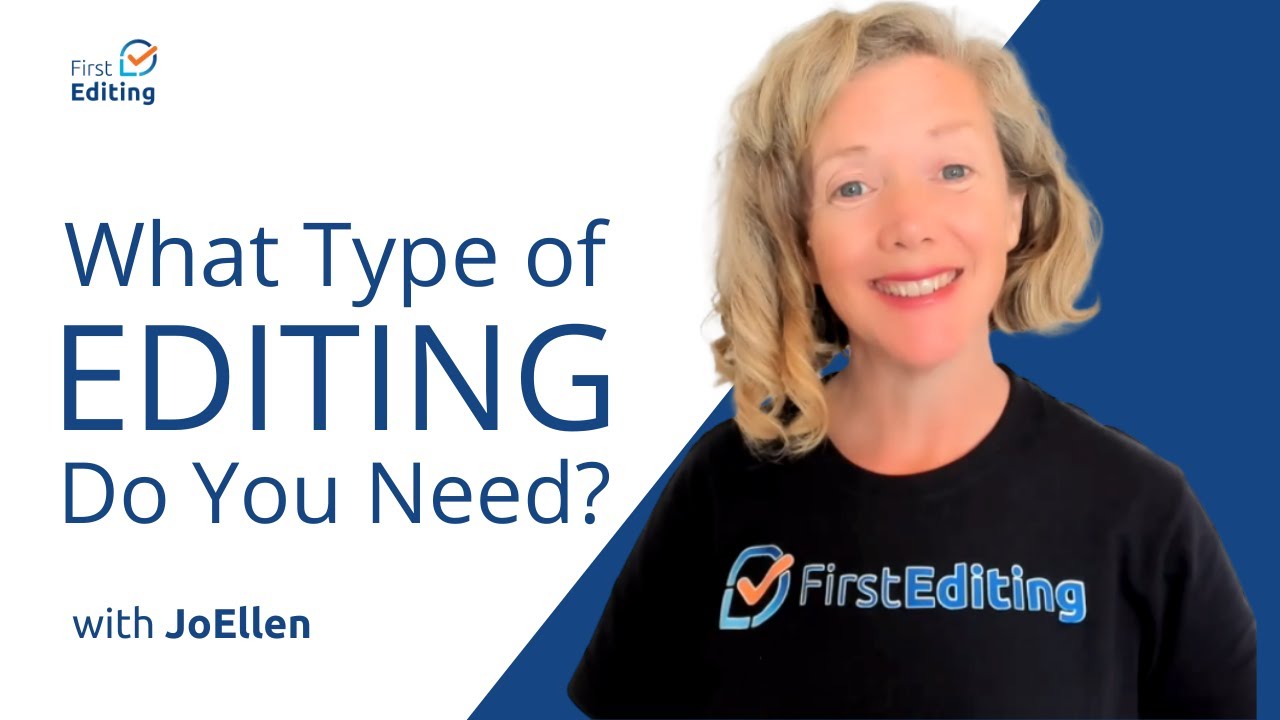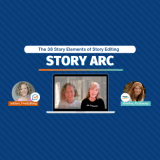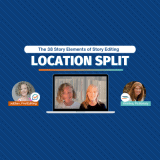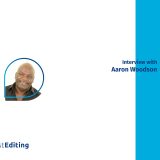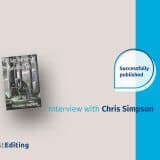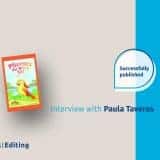
Let’s review what an editor looks for when evaluating your scenes. This is the methodical method of how to edit the scenes of your book.
Professional editors review the overall story arc of your book. In order to succeed in this task, we also evaluate the structure and arc of every scene in your book.
We review the scene’s focus from your reader’s perspective to ensure it is clear and understood. It must be an essential building block in your plot to drive your story forward.
So let’s walk through editing your scenes as a certified Structural Editor would.
What is a scene?
A scene is a sequence with characters in a unique setting with goals, conflict, tension, actions, and reactions that connect with other scenes and drive the story forward. The scenes combine to create your plot. Each should be essential to the story arc.
Remove any “scene” or event that does not have a logical goal for the plot which interweaves into the overall story.
What are the two essential parts of a powerful scene?
There are two parts in each comprehensive scene. These sections are not equal in presentation length, but each is necessary to compose a strong scene arc.
Action
An action arc comprises an action/event involving characters in a unique setting, which creates conflict and tension
Sequel
A sequel arc encompasses tension as a reaction to the action (conflict events) and results in a new dilemma, requiring a decision by the character to continue pursuing their overall story goal
An action or sequel can be standalone scenes or a combined scene. However, both parts are essential to fulfill the structure of a powerful scene.
What is a scene arc?
A scene arc is like a story arc. It requires a beginning, middle, and an end to be complete. The hook is your beginning, the development of your scene is the middle, and the climax is your end.
Editors evaluate every scene’s three-part structure to determine that you have created a solid foundation for the scene and for your story’s plot.
The scene has two essential parts to its whole, which we will review in-depth below. The action arc elements and sequel arc elements combine to create a comprehensive scene arc.
How you develop each element of the scene arc is unique to your manuscript. However, professional structure editors will locate and evaluate each element of every scene to strengthen your story.
A complete scene arc includes:
- Beginning / Hook
- Middle / Development
- End / Climax
There are various compositions and presentation methods in different manuscripts. However, we are reviewing the “standard” scene structure here for simplicity.
The final scene arc results from a combination of both the action scene arc and the sequel scene arc. The action scene arc provides the external and situational events of the scene, while the sequel scene arc gives the internal and emotional insights into each scene. Together, these arcs create a comprehensive and balanced scene arc.
Scene Arc Elements
The scene arc comprises the following elements:
- Goal
- Conflict
- Disaster
- Reaction
- Dilemma
- Decision
Goal, conflict, and disaster compose the action scene arc, while reaction, dilemma, and decision create the sequel arc.
What is an action scene arc and what does it include?
Action scene arc comprises the external and situational events within the scene. These are the external events which move the story forward within the plot line.
Goal
Your goal for each scene is short term when compared to the overall plot. The goal of the scene should align and apply to the point of view (POV) character’s goal. The POV character’s goal is a combination of both his external actions and internal desires. These must all tie into the long range plot goal.
The scene’s goal drives your story. You must establish the goal early in the scene for your readers.
Note that a scene’s goal can be independent or tied into an overarching goal accomplished over several scenes. It is most important that it applies to the plot.
However, if a scene’s goal does not tie into the plot goal, it is irrelevant. You can remove it. (Yes, we know this might be painful for you as an artist, but is important for your readers.)
When evaluating the goal element of each scene, professional editors ask:
- Is the goal relevant to the plot?
- Is it essential to the plot?
- Does it lead to a new scene which creates a new goal, conflict, and disaster?
- Does the scene goal match the POV character’s goal?
Conflict
The conflict of the scene prevents the character from achieving his goal in this scene. It is the obstacle which hinders the goal of the scene and character.
Conflict is essential to a scene. It drives the story forward and engages the reader.
No conflict = no scene = end of story
When evaluating the conflict element of each scene, professional editors ask:
- Does the conflict matter to the protagonist & his goal?
- Does it interfere or threaten the protagonist’s goal?
- Is the conflict essential within the scene’s goal?
- Does it relate to the overall plot?
- Does the conflict drive the story forward by providing new scenes?
- Is it organic and a result of the previous conflict/events?
- Is it logical?
Disaster
The disaster of a scene is an external result of the conflict which prevents the character from achieving his overall story goal. Thus, it applies to the plot.
The disaster element is essential because it connects the story to the next scene. The disaster needs to be important to the protagonist and your readers. Thus, it is high stakes. Ultimately, the disaster keeps the protagonist off-balance and drives the story forward.
The disaster must be organic to the events and a sensible result of the conflict.
When evaluating the disaster element of each scene, professional editors ask:
- Is the disaster engaging and important to the readers?
- Does it set up the next scene’s goals?
- Does the disaster drive the plot?
- Is it an organic and logical result of the conflict?
- Does the disaster connect appropriately to the scene’s goal?
Thus, the action scene arc consists of the goal, conflict, and disaster elements of a scene. These external events show us what is happening in a story.
But what is happening internally and emotionally with our protagonist? We discover those details within the sequel arc division of the scene.
What does a sequel arc encompass?
Sequel arc presents the internal balance to the external events of the action arc. It provides the elements of the POV character’s reaction, dilemma, and decision, which emotionally connect them to the readers.
The sequel arc allows readers to catch their breath from the action scenes. It is the essential essence of allowing your characters to react to the events. During this time, your readers get insight into the characters and connect. It is essential to reader engagement.
The sequel arc adds the essential second half of the scene and includes the ingredient of additional tension. It is the reaction to the action. It is a great way to weave in introspection.
Tension simmers internally within the characters under the scene’s surface, while conflict is the external actions we witness. The sequel arc allows strong character development by sharing the internal tension created from the action arc’s events.
The sequel arc elements of reaction, dilemma, and decision need to be focused and deliberate in presentation. It provides context and meaning to the action part of the scene.
The length and composition of the sequel arc is different for every scene. It can be contained within a few sentences for quick pacing or included over several chapters at a more slow pace.
Regardless, the sequel arc needs to be clear to your readers. You can write it outright or imply it in the details. Remember to always show, not tell, an interesting story.
Reaction
Reaction is your protagonist’s internal and emotional responses to the actions. This element gives your readers access to the character’s thoughts & feelings resulting from the disaster.
The reaction insight provides introspection, processing, and sharing with the reader from the character’s point of view. It allows your readers to connect and know the character’s personality better.
The reaction portion of the sequel arc acts as a counterweight to the events of the action arc. It also allows your readers to pause, breathe, and process the conflict.
When evaluating the reaction element of each scene, professional editors ask:
- Is the reaction related to the disaster?
- Is it appropriate and logical in response to the disaster?
- Does the reaction match the character’s personality?
- How have you portrayed the reaction? Is it sufficient & effective?
- Have you illustrated the reaction powerfully?
- Have you showed the reaction? (Show not tell)
Dilemma
Dilemma is the intellectual element of the sequel arc. The dilemma results directly from the disaster and causes further serious change for the story. It creates fresh problems, which the character must overcome.
The dilemma element sets up the next scene by asking a question. The character’s dilemma further heightens tension. Ultimately, it creates sympathy for your characters and engages your readers.
During the dilemma phase, your character reviews and analyzes the events and begins planning. The various options your character considers exposes their personality, which is important to your readers. They need to care and root for your protagonist.
“When you show your protagonist’s intellectual response and his thought pattern as he considers many (and rejects most) solutions, what you’re really doing is convincing readers your protagonist is a thinking human being and, more importantly, that your plot is based upon a pattern of logic instead of arbitrary events.” – K.M. Weiland
When evaluating the dilemma element of each scene, professional editors ask:
- Is the dilemma a direct result of the disaster?
- Is it clear to your readers?
- Why would your readers care?
- Is the dilemma portion of writing balanced with its significance?
Decision
Decision is your character’s answer to the dilemma question. It leads to action or inaction. Most often, it leads to action resulting from a new goal, which is the source of the next scene.
The element of decision is your protagonist’s strategy and behind-the-scenes planning that intrigues the reader. The decision stage of the sequel arc is the forward motion to keep the story going. Ultimately, it is your character’s long-term goal with a short-term decision which aligns with the plot.
When evaluating the decision element of each scene, professional editors ask:
- Is the decision a direct result of the dilemma?
- Does the decision create a strong and logical goal for the next scene?
- Does it drive the story forward with more potential events? Or does the decision simply solve the problem and end the story?
- Does it reveal important insight to the character?
- Is the decision element obvious (shown) or stated appropriately?
The decision creates a new goal bridges us to the next scene. Thus, you start once again.
Find out how an editor can help your book by getting a free editing sample and professional recommendation. Click here.
If you are still outlining or in your first round of self-editing, I highly recommend you read the posts for How to Structure Scenes in Your Story (Complete Series) on K.M. Weiland’s website HelpingWritersBecomeAuthors.com.




